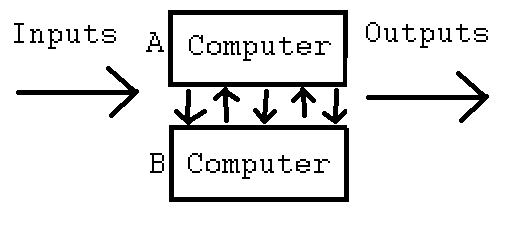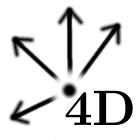Self-Conscious Machines
Imagine that you create two computers which are capable of carrying out some task. They recieve inputs and produce outputs.
Now both of of these computers have exactly the same internal state. Computer A is identical to Computer B.

Figure 1
If the inputs to both computers are exactly the same, the outputs are for the most part exactly the same. (see stanley kubrick for the case of different outputs)
Computer A is able to access the memory contents of computer B, and computer B is able to access the
memory contents of computer A. (See figure 1)
So if Computer A copies bit number 123 from Computer B into address 456 of its internal memory, then computer B copies bit number 123 from
computer A into address 456 of its internal memory.
The question of self-consiousness is solved this way.
Both halves are able to access a mostly identical copy of themselves in the other half. The closer both halves are to eachother the more "self" conscious the sytem
is.

Figure 2
Are both computers A and B necessary or could one computer access its own memory and operations? (Such as in Figure 2) Both are necessary to access the present operation as it is being carried out. (A history of operations could be stored and accessed later but would always be slightly out of date)

Figure 3
You could consider the mirror architecture given in Figure 3 above. However there will always be some lag in the time it takes to make a measurement through the mirror so this is similar to the self accessing architecture above.
Further work on the parallel mind theory is necessary, how to synchronize memory contents, resolve disputes between hemispheres and identify infinite loops.
-Point4D Machine Intelligence Division




